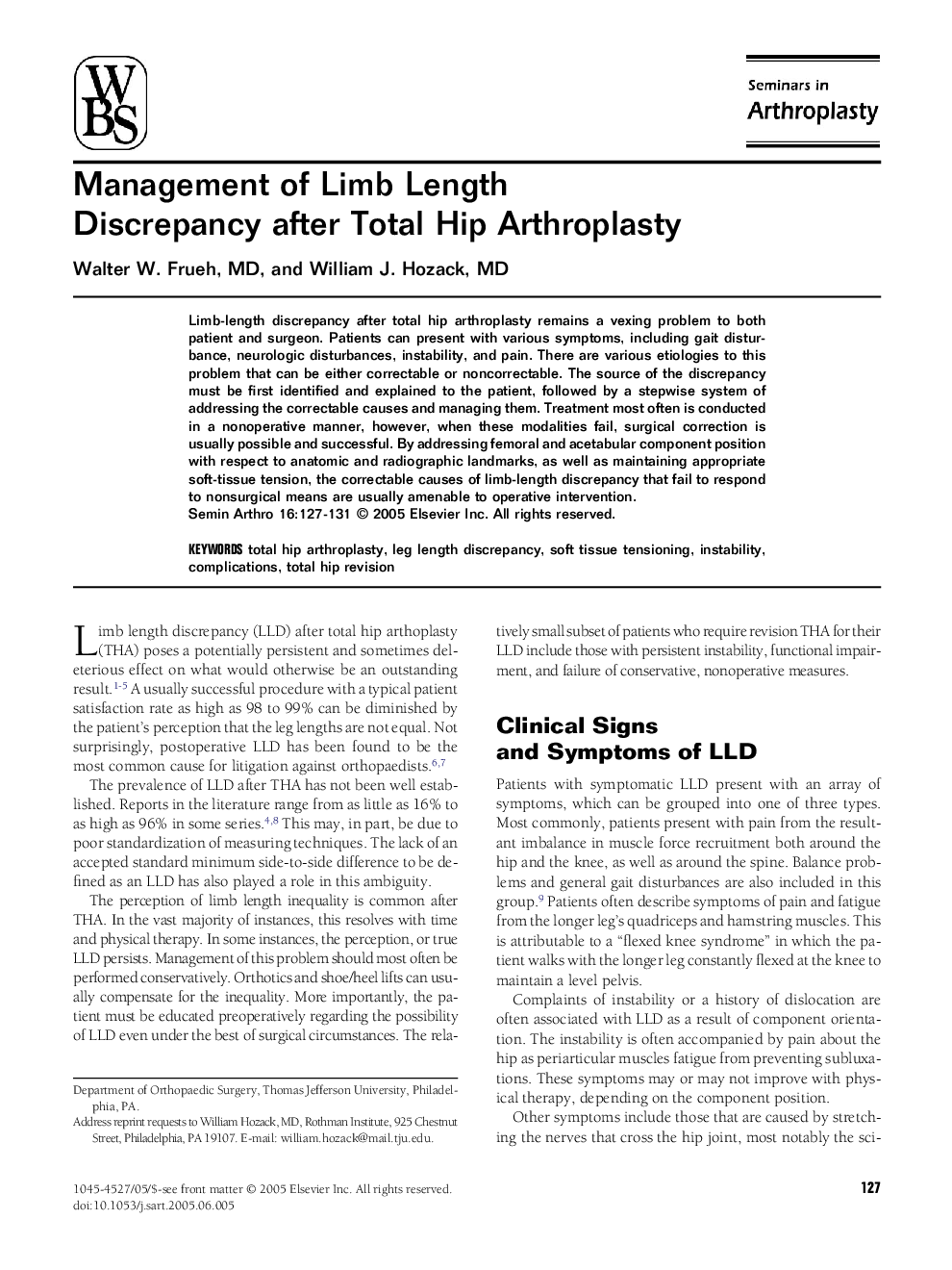| Article ID | Journal | Published Year | Pages | File Type |
|---|---|---|---|---|
| 9359482 | Seminars in Arthroplasty | 2005 | 5 Pages |
Abstract
Limb-length discrepancy after total hip arthroplasty remains a vexing problem to both patient and surgeon. Patients can present with various symptoms, including gait disturbance, neurologic disturbances, instability, and pain. There are various etiologies to this problem that can be either correctable or noncorrectable. The source of the discrepancy must be first identified and explained to the patient, followed by a stepwise system of addressing the correctable causes and managing them. Treatment most often is conducted in a nonoperative manner, however, when these modalities fail, surgical correction is usually possible and successful. By addressing femoral and acetabular component position with respect to anatomic and radiographic landmarks, as well as maintaining appropriate soft-tissue tension, the correctable causes of limb-length discrepancy that fail to respond to nonsurgical means are usually amenable to operative intervention.
Related Topics
Health Sciences
Medicine and Dentistry
Orthopedics, Sports Medicine and Rehabilitation
Authors
Walter W. MD, William J. MD,
